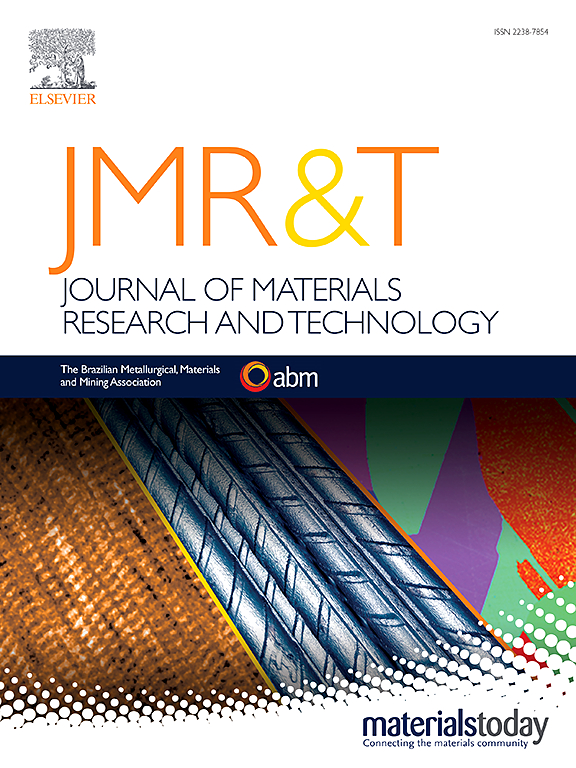Study on the formation mechanism and morphology of edge burrs in radial fly-cutting of triangular pyramid microstructures
IF 6.2
2区 材料科学
Q1 MATERIALS SCIENCE, MULTIDISCIPLINARY
Journal of Materials Research and Technology-Jmr&t
Pub Date : 2025-03-11
DOI:10.1016/j.jmrt.2025.03.091
引用次数: 0
Abstract
The triangular pyramid microstructures (TPM) have been widely applied in the optical field due to its excellent optical properties, such as refraction and reflection. However, the burrs generated during radial fly-cutting (RFC) will have an adverse effect on product performance. To address this issue, the formation mechanism of edge burrs in TPM is deeply analyzed, and RFC experiments are carried out. By adopting the orthogonal experimental method, the influence of processing parameters on the morphology and size of the edge exit burrs is systematically studied. The results indicate that the formation of edge exit burrs is caused by the plastic lateral flow phenomenon of the material in this region. Additionally, the adhesion of chips that have not been promptly separated from the workpiece further increases burr size. The edge exit burrs can be classified into four types: flaky curled burrs, blocky burrs, slim strip burrs, and filiform (thread-like) burrs. As for the two experimental indicators of the edge exit burr projection area and thickness, the main and secondary influencing factors are cutting depth, fly-cutting speed and feed speed. The projection area and thickness of the burrs decrease with the increase of fly-cutting speed, while they increase with higher feed speeds and finer cutting depths. Based on these findings, the optimized processing parameters are determined as follows: fly-cutting speed of 16.76 m/s, feed speed of 10 mm/min, and fine cutting depth of 2 μm. This study provides valuable insights for minimizing burrs and optimizing subsequent deburring processes.
求助全文
约1分钟内获得全文
求助全文
来源期刊

Journal of Materials Research and Technology-Jmr&t
Materials Science-Metals and Alloys
CiteScore
8.80
自引率
9.40%
发文量
1877
审稿时长
35 days
期刊介绍:
The Journal of Materials Research and Technology is a publication of ABM - Brazilian Metallurgical, Materials and Mining Association - and publishes four issues per year also with a free version online (www.jmrt.com.br). The journal provides an international medium for the publication of theoretical and experimental studies related to Metallurgy, Materials and Minerals research and technology. Appropriate submissions to the Journal of Materials Research and Technology should include scientific and/or engineering factors which affect processes and products in the Metallurgy, Materials and Mining areas.
 求助内容:
求助内容: 应助结果提醒方式:
应助结果提醒方式:


